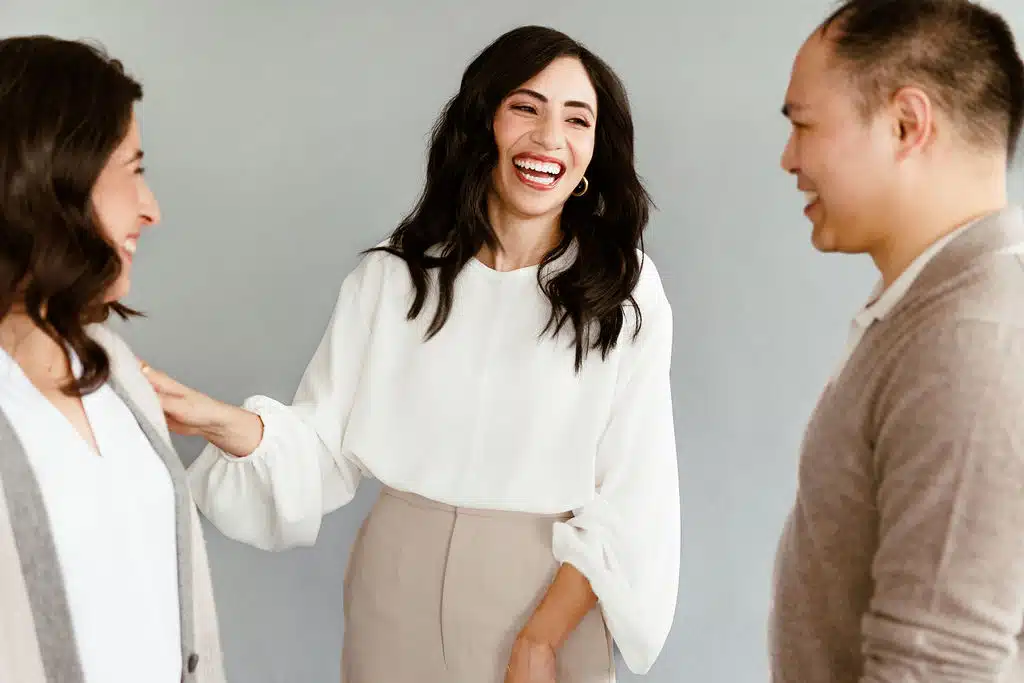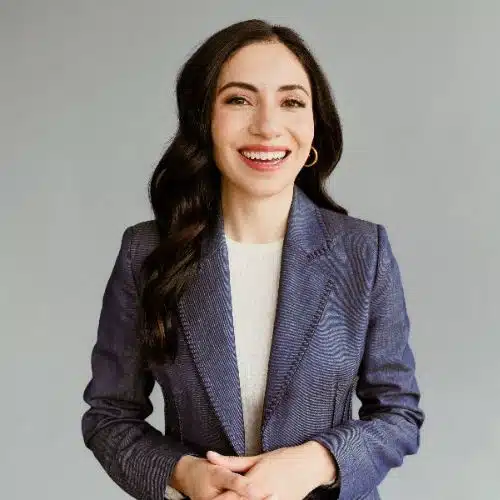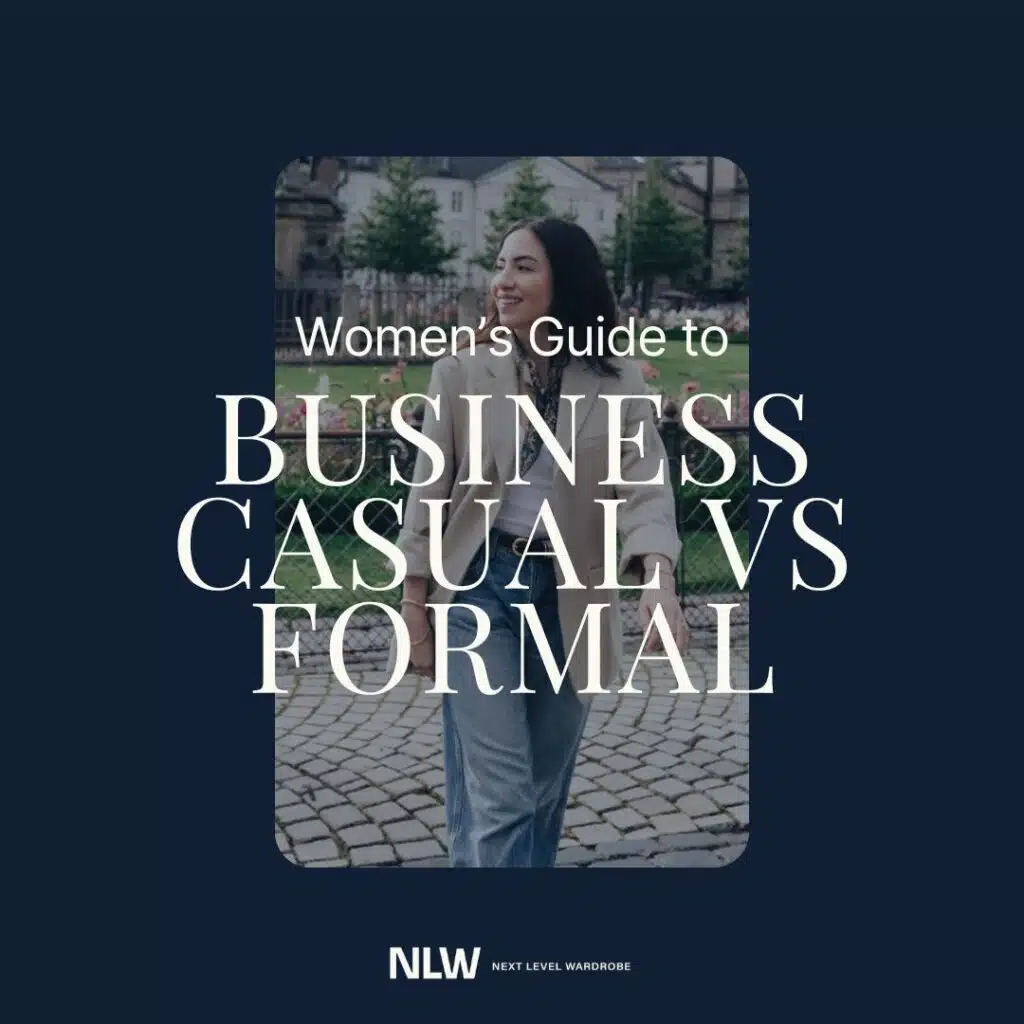
You’ve likely encountered the confusion of balancing business casual and business professional attire. Perhaps you’ve found yourself in a room full of suits while in casual khakis (or the opposite). The good news is, there are clear, time-tested guidelines to answer the age-old question: What is business casual for women? Let’s break it down so you’ll never second-guess your outfit again.
Table of Contents
Business Casual vs Professional Attire: What’s the Difference?
Business casual is a dress code that balances traditional business attire and a more relaxed yet professional style suitable for the office.
While business casual is generally more formal than jeans, some workplaces permit well-fitting, hole-free jeans paired with blazers and heels. It is less formal than a suit but still maintains a professional appearance.
Typical business casual attire includes:
- Dress pants
- Chinos
- Skirts that hit the knee
- Casual and formal tops
Business professional (or business formal) attire is the most conservative dress code, typically worn for high-stakes meetings, interviews, and formal events. It often requires darker colors, covered shoulders, knee-length or longer dresses or skirts, and button-up tops that are not low-cut.
Stylist Tip: Whether dressing business casual or business professional, always remember to:
- Choose wrinkle-free clothing
- Avoid vacation-style attire
- Opt for timeless, polished pieces that reflect a professional image and represent your company well.
Executive Style: Looking Polished, Professional, WITHOUT Looking Stuffy
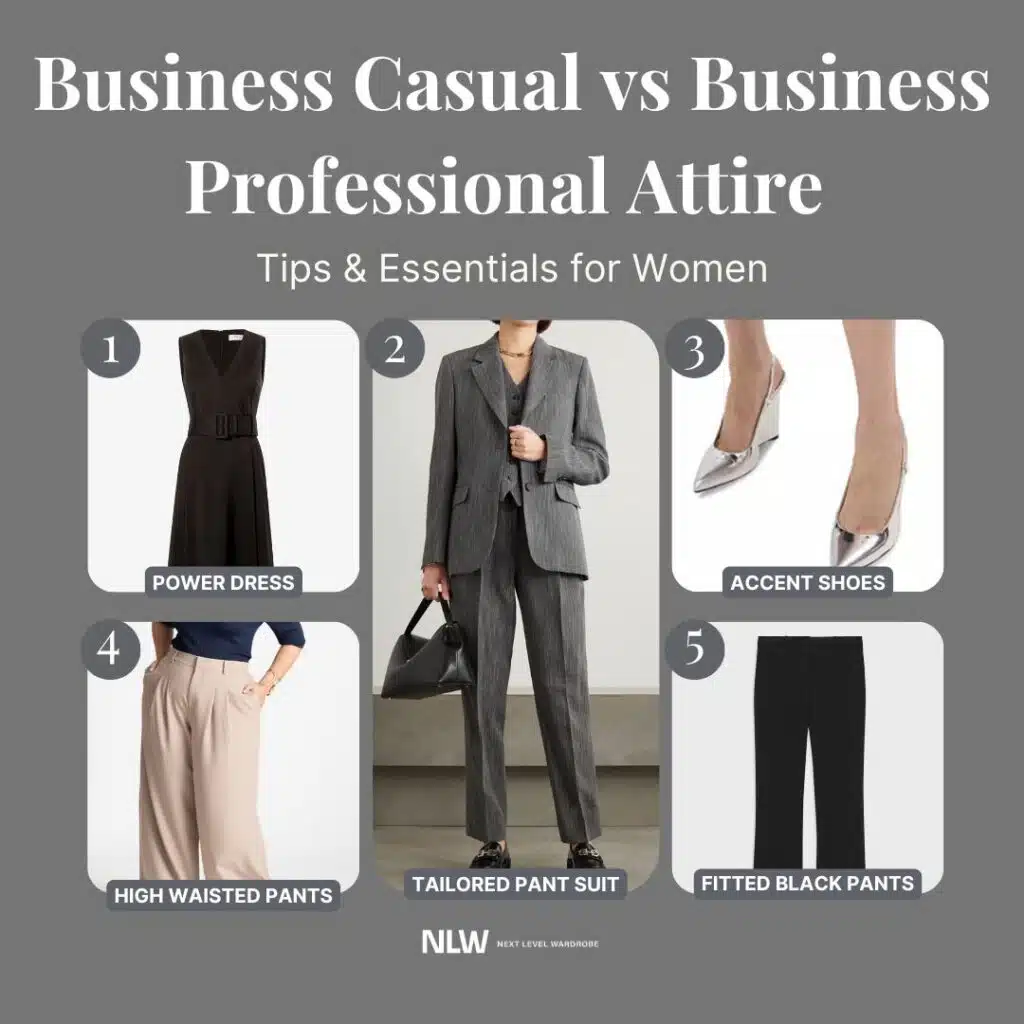
When in doubt, dress like the most well-dressed employee at your office who is on your same “level” in the hierarchy of positions.
Suppose you work in a formal setting, such as a financial, leadership, legal, or other professional office, and you often see peers and bosses wearing suits regularly. In that case, it’s safe to assume you are expected to wear business professional attire. (We’ve got a great guide for power dressing as a lawyer, FYI.)
However, this doesn’t sentence you to a repetition of the same three suits throughout the weeks and months. Instead, it means we’ll focus on incorporating more formal elements, or sometimes just elevating your look with upgraded shoes.
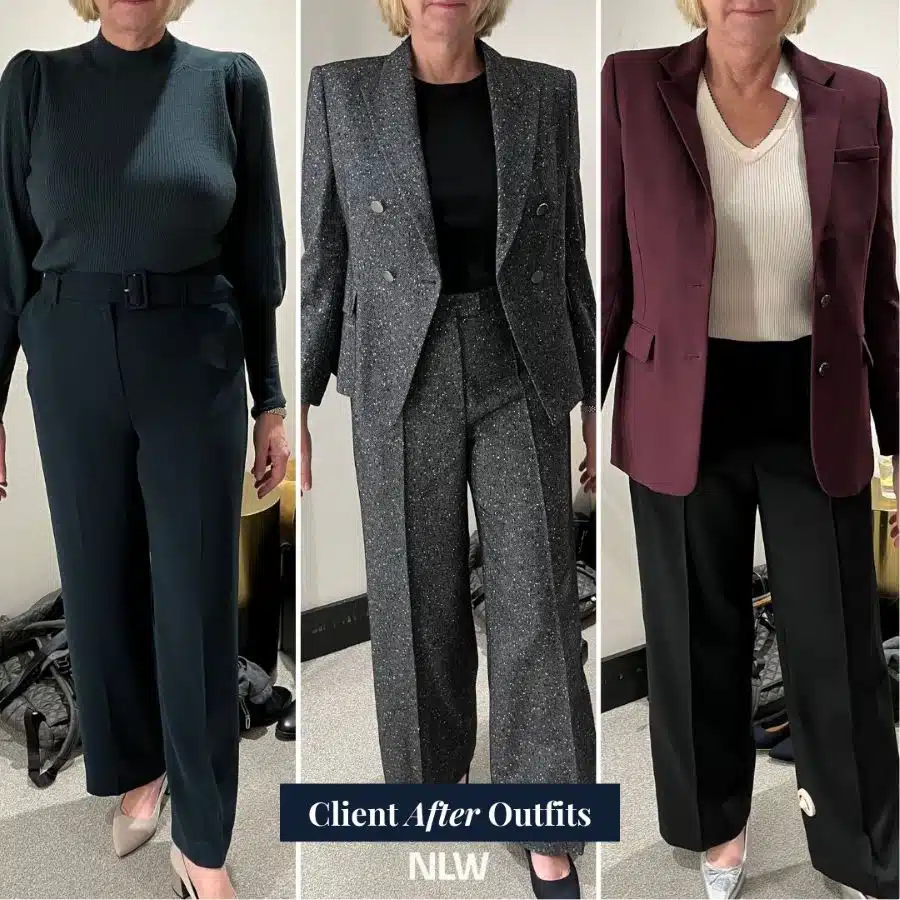
Samantha, Age 55, Partner at a Leading NYC law firm
For example, look at this NLW client after photos pictured above. Our client is a high-powered professional who needed looks that matched her executive position. But, she didn’t want to look uptight or boring. So, how did we elevate her style without losing her personality?
Through subtle but meaningful differences. For example, take a look at the outfit on the left. We could have created this same monochrome look with a traditional long-sleeve blouse or sweater. But by picking a piece with a slightly puffed sleeve, we added a feminine, trend-aware touch.
The same with the middle ensemble. This suit fits our client beautifully, and the oversized lapel look and wide-legs are modern, but what seals the deal is opting for the gray and white speckling instead of a boring gray suit.
Even the third outfit features a subtle pop of silver in the shoes, making it interesting, unique, and still polished. Professional doesn’t have to mean boring!
Why Color Matters: A Quick Note on Its Impact
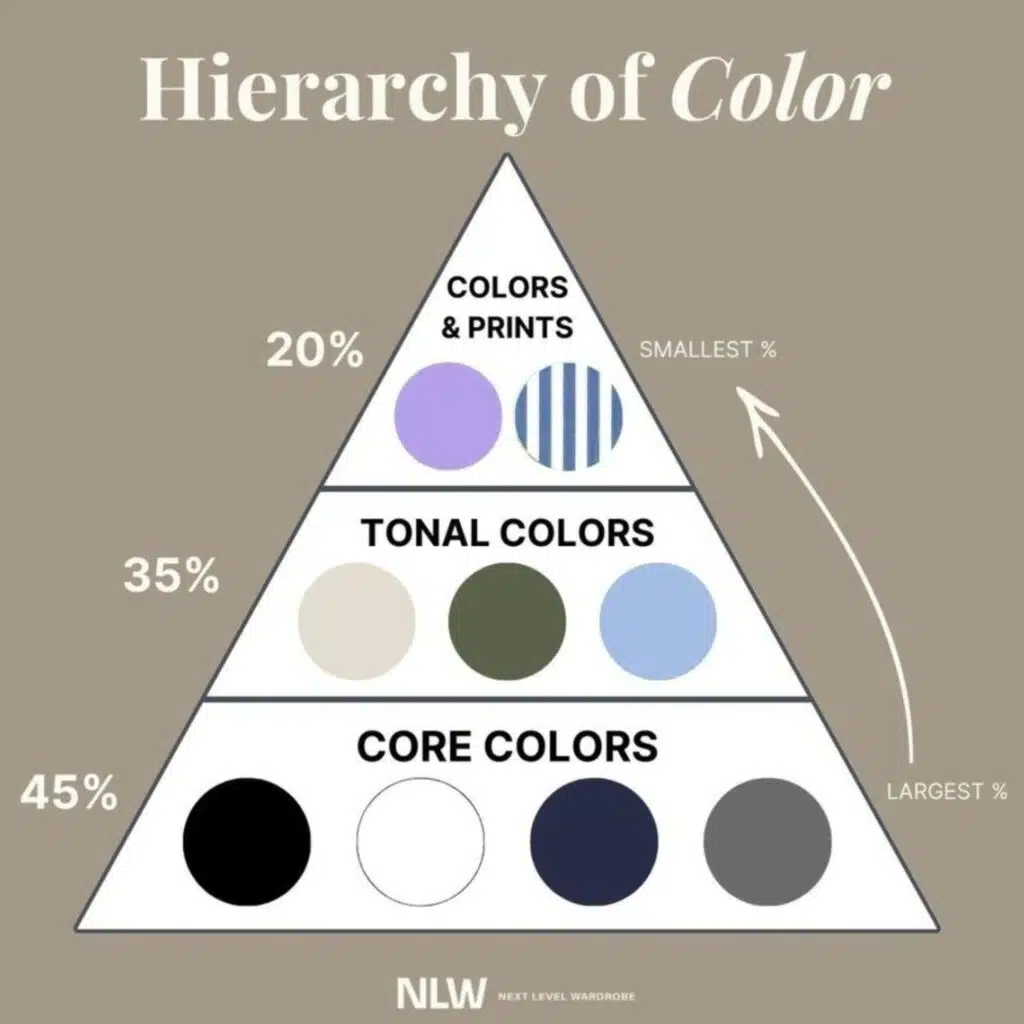
You may have more of an ability to play with color in a business casual environment, but all office wear can benefit from following my color-coding advice in the Next-Level Style System. I encourage you to focus on a balance of color, fit, and essential pieces (as well as recommend certain percentages to follow!)
Fifty percent of the outfits pictured use “core colors” as she recommends, including white, navy, gray, and black. Only 10 percent of an outfit will feature a brighter or more seasonal color, and shoes are often a great way to pull this off in a professional work setting. Prints and tonal colors make up the remaining 40 percent, which can be integrated into a business casual outfit as a casual blouse or a jacket with a fun printed shirt underneath.
By following this rule, you can integrate colors and prints tastefully as you figure out what is business casual for women and what is business professional attire. Now, let’s break down the 5 musts for either type of dress code.
Do You Have Frumpy Style?
5 Staple Pieces for Any Business Casual or Business Formal Attire
1. The Well-Fitting Black Pant: A Staple in Both Workplaces
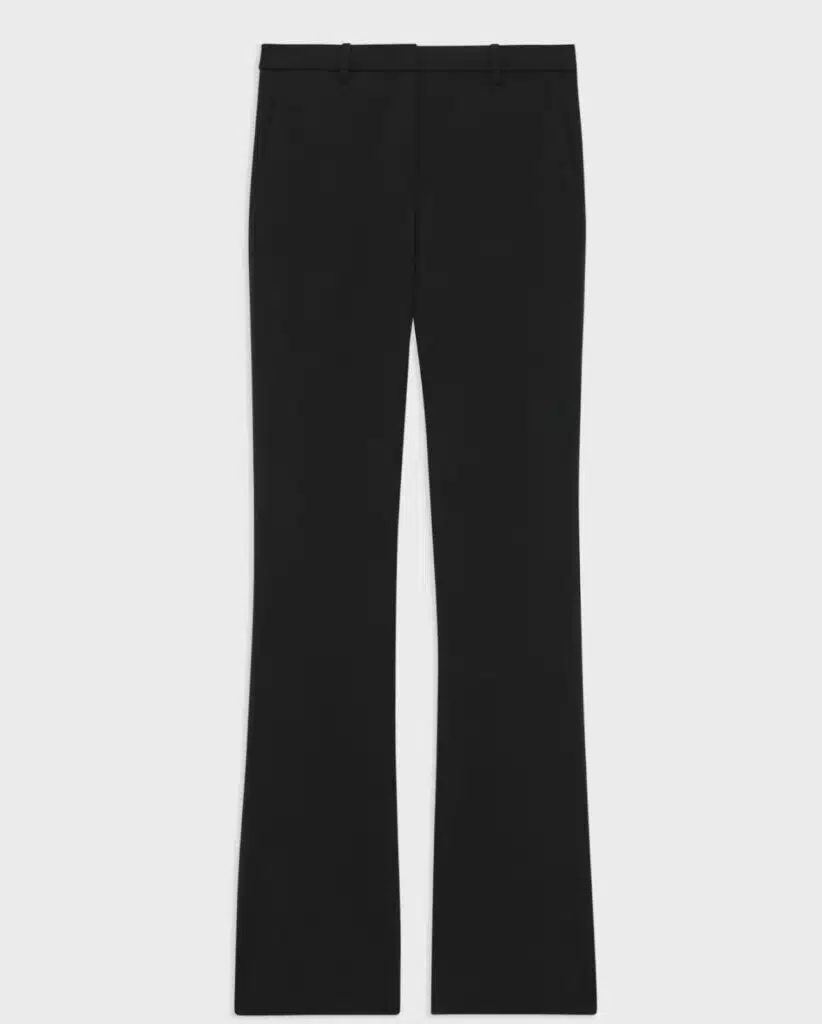
Product by Theory, shop here.
Women wondering what business casual is (or is not) can take a simple, well-fitting pair of black pants as a base. Then, add a more formal top, such as a button-down or a blouse with fancier detail, and tuck it in.
Top this with a well-fitting blazer, and you essentially have a business professional-approved mix-and-match suit. The same outfit could be considered business casual if you simply remove the blazer and wear more casual shoes.
In this way, fit and layers become essential to determining business casual and business professional attire.
2. From Casual to Professional: The Power of Shoes in Business Attire
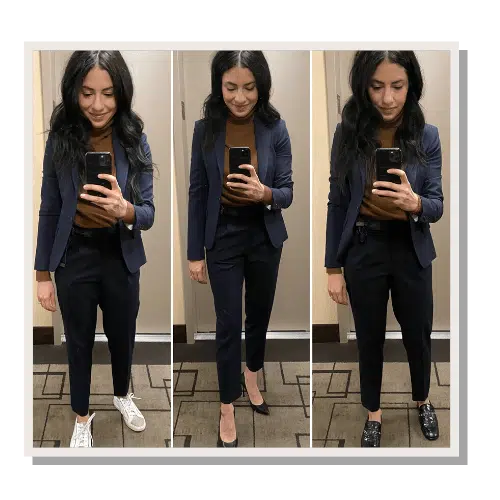
Another way to determine what is business casual for women is to consider the shoes. High heels, stilettos, and dressier shoes can make an outfit seem more formal, and women working in professional offices often wear these types of shoes to communicate this professional vibe.
Flats can still be worn professionally, so don’t worry if your feet (and back) can’t handle high heels. A more practical one to two-inch heel can do the trick as well. You can still portray a commanding presence with flats, especially if they have a very small heel or other details that make them seem more professional, such as a patent leather detail or an interesting print.
Notice in the photo that the outfits have a casual vibe based on the sandals and flats.
3. The Versatile High-Waisted Pant: A Must-Have for Professional Attire Across Any Dress Code
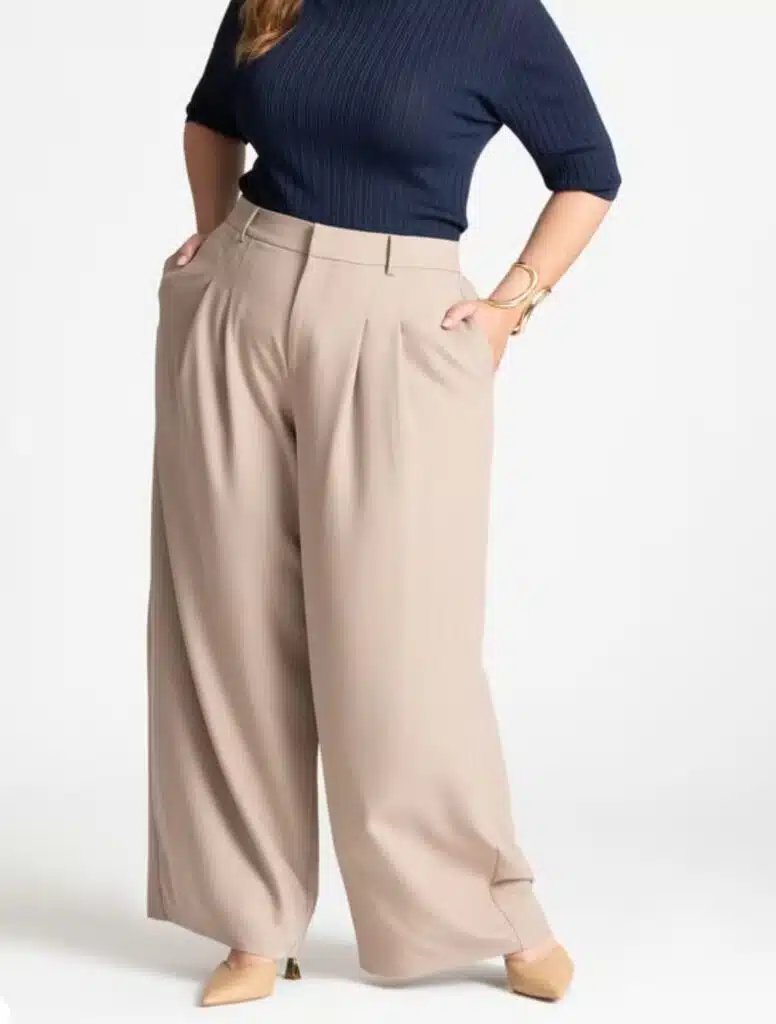
Product by The Fluid, shop here.
High-waisted pants, especially ones with ties, are key pieces in business casual and formal wardrobes. A well-fitting pair of black high-waisted pants with a tie can instantly pull your look together, especially when you have nothing to wear.
When dressing for a business formal environment, elevate the look with a button-down shirt or formal blouse and high heels. For added formality, throw on a blazer. For a business casual setting, swap the blouse for a more casual top and choose flats.
No matter the dress code, it’s crucial to pair these pants with a well-fitted top, avoid anything too baggy, and tuck it in to maintain a clean, polished silhouette without too many loose pieces competing for attention.
4. The Power Dress: A Business Professional Suit Alternative
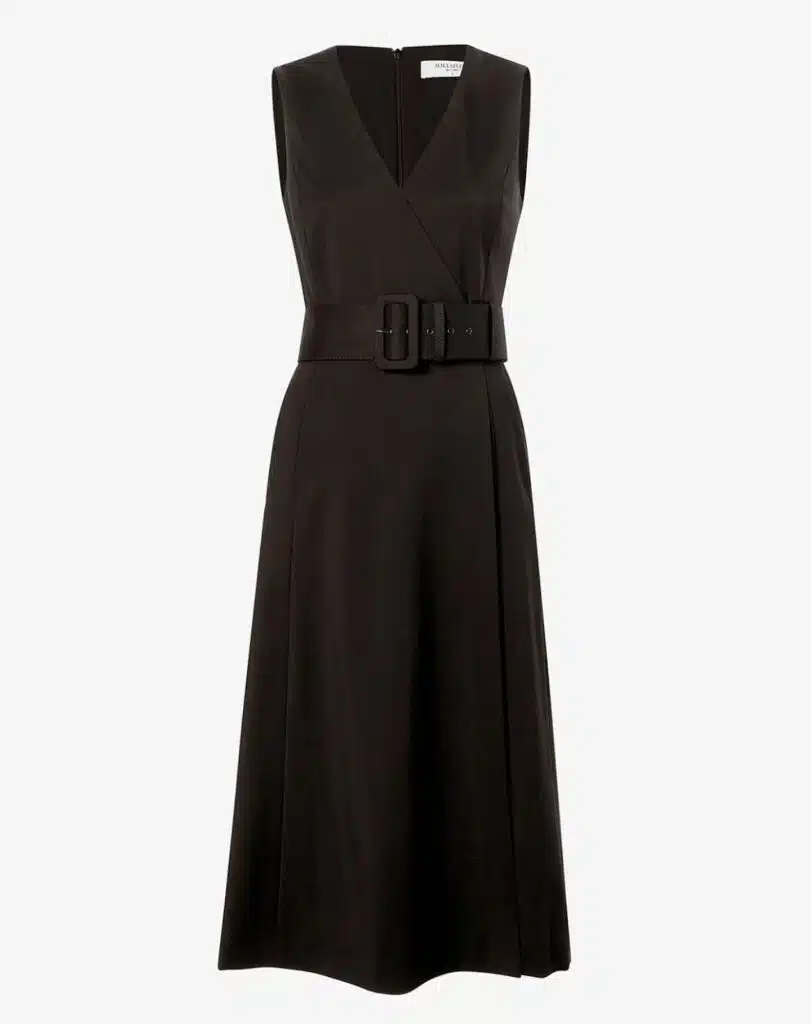
Product by MM La Fleur, shop here.
While women who are trying to build a business casual wardrobe can wear dresses, the fabric, fit, and style of these dresses are often more casual than a business professional’s power dress. The power dress can replace the suit as a staple throughout the week.
As seen in the picture, these formal work dresses are well-fitted and conservative, but definitely give off a powerful and put-together vibe. Paired with heels, these dresses can make for the perfect single-item outfit.
Women working in a professional environment should ensure the dress hits at or below the knee, or even lower, like the flowy first option. Full-length dresses, such as a maxi skirt or dress, are not typically worn in a professional setting, though some business casual employees can wear a maxi skirt.
5. Building the Perfect Executive Wardrobe: The Versatile Mix-and-Match Pantsuit
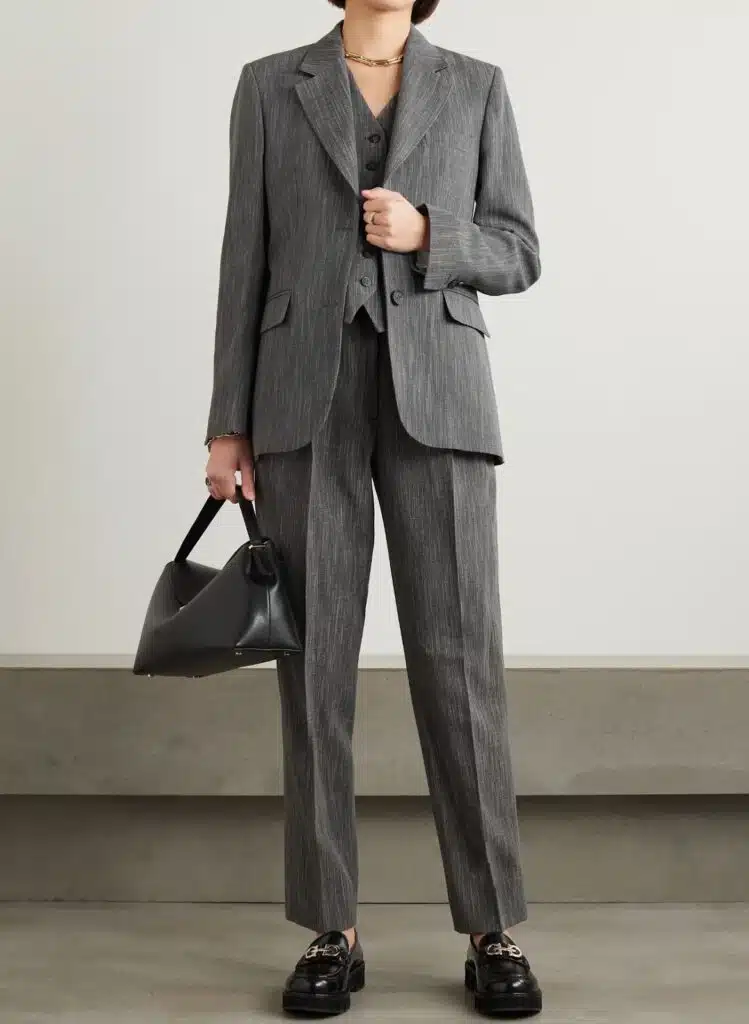
Product by Golden Goose, shop here.
Some offices require employees to shift from business casual to business professional (and back) depending on the day, meetings, and who they’ll be interacting with. In this case, a mix-and-match pantsuit is the perfect solution for a flexible wardrobe that adapts to your schedule.
The full pantsuit creates a powerful, poised look with a formal tone for important interviews or presentations. On more casual days, the blazer can easily be paired with dark jeans, a blouse, and heels for a polished but relaxed vibe. The dress pants or pencil skirt from the set can be mixed and matched throughout the week, dressing up or down depending on the occasion.
By rotating a few shirts, you can create multiple outfits and avoid repeating the same look too often, tailoring your style to the day’s needs. And no matter how you mix and match, make sure to have a tailor adjust the fit of your pants and sleeves for a more polished look.
Ready to elevate your executive wardrobe with standout business casual and professional attire?
Next Level Wardrobe is here to help you elevate your look, confidence, and career. We offer image consulting and personal styling services to professional women. If you’re interested in our services, please contact us.


